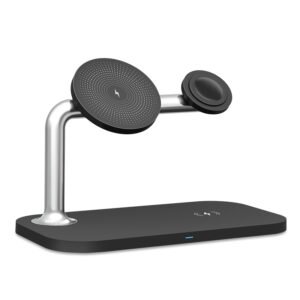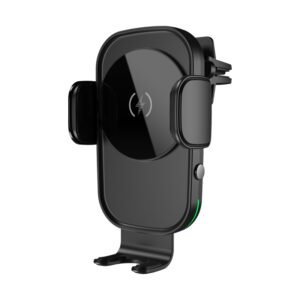Recently, the USB PD 3.0 fast charge standard ushered in the latest upgrade. The new USB PD 3.1(Power Delivery 3.1) quick charge standard will support a maximum voltage output of 48V, and the charging power will be increased to 240W simultaneously.
USB PD 3.1 is officially released
On May 25th, the USB-IF Association launched the USB Type-C cable and interface standard v2.1 version, which updated the chapter on power supply capabilities. The USB PD3.1 specification categorizes the original USB PD3.0 content into the Standard Power Range (SPR). The maximum power remains unchanged at 100W simultaneously, the Extended Power Range (EPR) is added. The maximum capacity is expanded from 100W to 240W.

According to the data released by the USB-IF Association, in the extended power range EPR, three new fixed voltage files of 28V, 36V, and 48V and three adjustable voltage supply (AVS) have been added.

The maximum current level remains unchanged at the maximum 5A; 100-140W power is 28V AVS, and the voltage range is 15V-28V; power greater than 140W to 180W is 36V AVS, and the voltage range is 15V-36V; greater than 180W to 240W is 48V AVS, voltage The range is 15V-48V.
Under the USB PD3.1 standard, USB Type-C cables are divided into two specifications: 20V-rated standard cables and 50V-rated EPR cables. More than 100W power output, not only need to use EPR (Extended Power) 5A cable, but also must pass EPR specific information handshake between Source, Sink and Cable to enter EPR from SPR; if the cable is fixed to the charger On the Captive cable, you only need to shake hands between Source and Sink.
Since the voltage level is greatly increased, the safety issue is significant. EPR puts forward higher requirements for the safety regulations of connectors and cables. We need to focus on the IEC 62368 on Limited Power Supply (LPS) regulations.

It is worth noting that in the formulation of this USB PD3.1 specification, many domestic companies such as Huawei, Xiaomi, Luxshare Precision, Huinengtai etc. have actively participated in it and made important contributions to the new standard, which were included in the drafting of the standard. Enterprise directory.
The full name of USB-IF is USB Implementers Forum. It was established in 1995 and headquartered in the United States. It was co-founded by companies such as Apple, HP, Intel, Microsoft, Renesas, ST STMicroelectronics, and TI Texas Instruments. In December 2020, Charging Head Network obtained an updated list of members from the USB-IF Association, and the total number of members has exceeded 12,000.

USB-IF is a non-profit organization dedicated to the development of Universal Serial Bus technology and the promotion of its application. USB provides standard and unified transmission interface specifications, making the connection and transmission between computers and peripheral equipment easy, saving The inconvenience of using external cards or switches. Generally, information products that use the USB specification include a wide variety of products, such as computers, cameras, printers, keyboards, mice, screens, network devices, mobile phones, and various new consumer electronics products.
| USB Charging Standard Development History | ||
| Time | Protocal | Specification |
| 2020 | USB BC1.2 | 5V 1.5A |
| 2012.7 | USB PD1.0 | Unknown |
| 2014.8 | USB PD2.0 | 5V 3A, 9V 3A, 15V 3A, 20V 2.25A, 20V 3A, 20V 5A |
| 2017.2 | USB PD3.0 | 5V 3A, 9V 3A, 15V 3A, 20V 2.25A, 20V 3A, 20V 5A PPS: 3.3V-5.9V 3A, 3.3-11V 3A, 3.3-16V 3A, 3.3-21V 3A, 3.3-21V 5A |
| 2021.5 | USB PD3.1 | 5V 3A, 9V 3A, 15V 3A, 20V 2.25A, 20V 3A, 20V 5A PPS: 3.3V-5.9V 3A, 3.3-11V 3A, 3.3-16V 3A, 3.3-21V 3A, 3.3-21V 5A EPR: 28V 5A, 36V 5A, 48V 5A AVS: 15-28V 5A, 15-36V 5A, 15-48V 5A |
| For reference only. | ||
In 2010, the BC (Battery Charging) group under the USB-IF Association formulated the BC1.2 (Battery Charging V1.2) protocol, which was mainly used to standardize battery charging requirements. The protocol was first implemented based on the USB2.0 protocol. Later, almost all private fast charge standards (except Apple), such as QC, AFC, SCP, FCP, etc., were extended from BC1.2.

In July 2012, USB-IF released the USB PD1.0 standard based on the universal USB-A and USB-B interfaces at the time, depicting the beautiful images of the power supply capacity of up to 100W through the USB 3.0 and USB 2.0 interfaces, but It uses a frequency of 24MHz and is coupled to the power line carrier. Due to signal integrity and two-way power transmission issues, it was quickly replaced by USB PD2.0.
In August 2014, the USB-IF Association released the revolutionary Type-C 1.0 interface standard and USB PD2.0 standard. The two-way power transmission was realized through the USB-C connector and the addition of the CC communication line in the cable. And the idea of a maximum 100W power supply solves the difficulties encountered in the implementation of USB PD1.0.
At the end of 2015, the USB-IF Association launched the USB PD3.0 standard and released a significant update to the USB PD3.0 standard in February 2017, adding a programmable power supply PPS on the basis of the USB PD3.0 standard. PPS is a fast-charging form with a very high share of the Android camp. Through the fine adjustment of 20mv and the built-in charge pump of the mobile phone, it can achieve 100W high-power fast charging.
The introduction of the USB PD3.1 specification will lead the USB PD fast charging chip to enter a larger market, not only limited to mobile phone charging, notebook computer charging applications.
In addition to power supply chips, the expansion of the USB PD fast charging market will also drive the market demand for two-way charging protocol chips, such as power tools, server power supplies, communication power supplies, and other emerging application scenarios. Product upgrades require two-way charging chips.
Industry Significance
It is understood that the new 28V, 36V, and 48V voltages in this specification correspond to the applications of 6 batteries, eight batteries, and ten batteries, respectively. The USB PD fast charging standard has expanded many new application areas, including computers, servers, motor drives, and communication power supplies.
Due to the limitation of terminals and cables, the USB-C transmission current is limited to 5A, the voltage of USB PD3.0 is 20V, and the power is 100W, which limits high-power usage scenarios. USB PD3.1 expands the voltage to 48V, and the current remains unchanged at 5A, which increases the carrying power to 240W.
 For computer applications, the maximum current power of 100W of the USB PD3.0 standard is only sufficient to maintain the power supply requirements of some thin and light notebook computers, and more powerful gaming notebooks still need to continue to use traditional large DC adapters.
For computer applications, the maximum current power of 100W of the USB PD3.0 standard is only sufficient to maintain the power supply requirements of some thin and light notebook computers, and more powerful gaming notebooks still need to continue to use traditional large DC adapters.

The USB PD3.1 standard can provide a maximum charging power of 240W, covering almost all high-performance stand-alone gaming laptops, mobile workstations, and some desktop computers. At the same time, it will further enhance the popularity of the USB PD fast charging standard in consumer power supplies. Rate, replace the traditional bulky power adapter with an advanced USB PD3.1 adapter.
The USB PD3.1 specification covers the power supply of 24V bus motor drives, such as the power tool market. At present, the popularity of power tools with built-in batteries is getting higher and higher. Only in 2020, the shipment of power tools has reached 490 million units, and most of the power tools are powered by multiple strings of lithium battery packs, USB PD3.1 standard. The release will promote the iteration of power tools from traditional linear charging to USB PD fast charging and simplify the charging circuit design, reduce overall costs and improve the fast charging experience.
In addition, the USB PD3.1 standard can also be applied to the security field of POE power supply, two-wheeled electric vehicles, IoT Internet of Things equipment, and other areas to optimize equipment costs.
Conclusion
USB PD 3.1 is a very ambitious standard upgrade. It is a new Fast Charging Technology launched by USB-IF. It expands the application of USB PD from traditional mobile phones and laptops to portable devices, Internet of Things devices(IoT), smart homes, communications and security equipment, automobiles, and medical fields. USB PD will become a genuinely unified power supply standard, which will play an essential role in promoting the environmental protection of the earth, reducing electronic waste, and the interconnection of everything.













